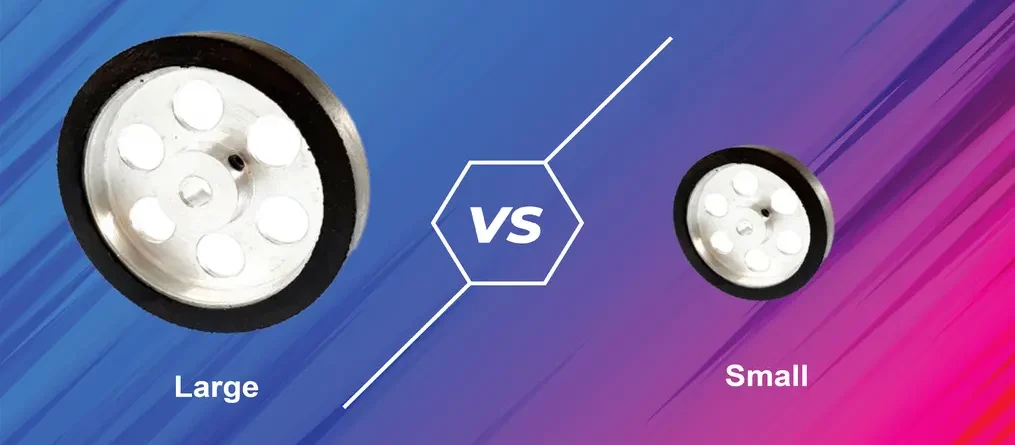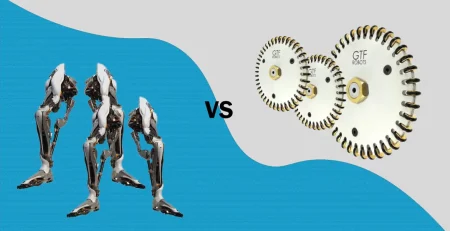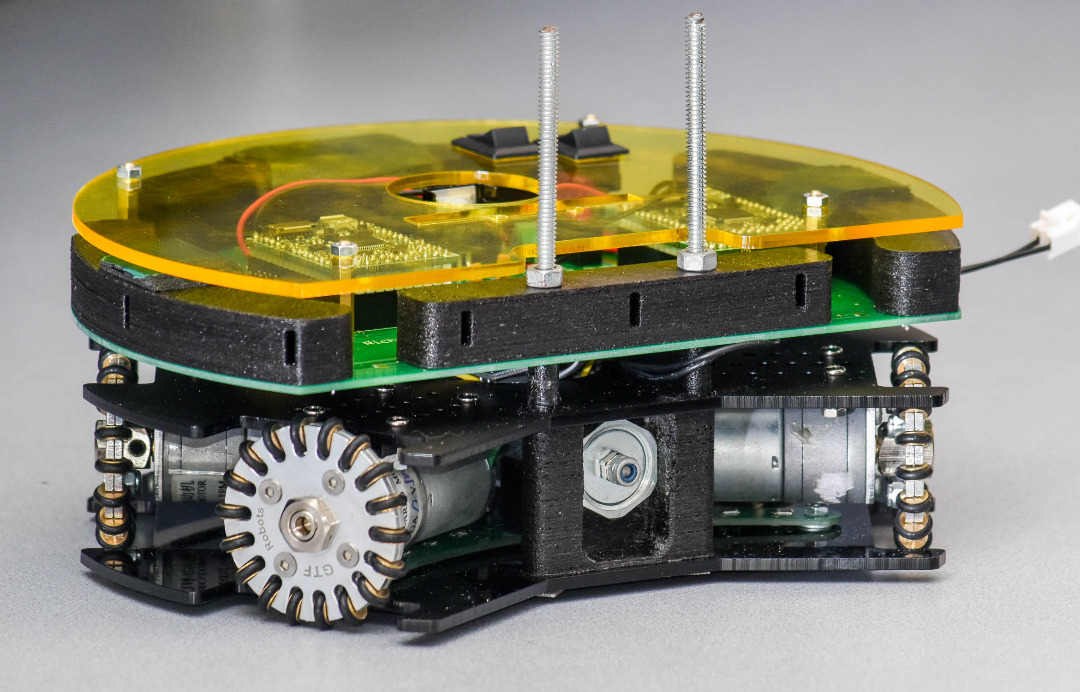13May
How does Wheel Size Affect Your Robot Performance?
- Home
- Blog
- Robot Parts
- How does Wheel Size Affect Your Robot Performance?
Get in touch
© GTF Robots. 2022. All Rights Reserved

The size of the wheels you use can significantly affect your robot’s performance. In this guide, we will take a look at how wheels diameter can affect robots’ torque, speed, acceleration, pushing power, ability to go over obstacles, and, more.
Larger wheels with bigger diameters can traverse faster because they can go longer distances per revolution in a given time. On the other hand, smaller wheels are much slower, traveling much less distance in the same amount of time.
It’s important to know that the size of your wheel does not change the torque. It is determined by the amount of rotational force a motor can produce. The force is multiplied by the wheels’ radius (torque = Frictional Force x Wheel Radius). But, the size of your wheels can affect how much force your robot can produce. Large wheels are heavier, requiring more energy to roll, meaning less force is available. Alternatively, small wheels need less energy to rotate. So, the amount of force they produce will be higher.
A large wheel has more traction than a wheel with small diameter because the wheel covers more of the ground surface, resulting in firmer hold in the ground.
The larger the wheels, the higher the center of gravity is. The center of gravity is the point at which the average weight of any object is concentrated, creating balance and stability. When stability is the limiting factor of robot performance, having a low center of gravity can immensely help with balance.
With small wheels lowering the robot base due to its smaller diameter, the chance of the robot tipping over will decrease.
Larger wheels can provide a smoother ride by not allowing road obstacles and bumps to affect the robot. But a smaller wheel transfers all the shakes and wobbles in the road to the robot, creating a more unstable and rough ride.
| Wheel size | Acceleration | Speed | Force | Traction | Center of gravity | Passing over Obstacles | Weight |
|---|---|---|---|---|---|---|---|
| Small wheels | Fast | Slow | High | Low | Down | Hard | Light |
| Large wheels | Slow | Fast | Low | High | Up | Easy | Heavy |
Although, large and small wheels can affect your robot performance in different ways, it all boils down to your project priorities. While choosing one can improve speed, the other can increase acceleration. It’s another trade-off in robotics. You need to make a list of what really matters in your project, and then decide what size your robot wheels should be. So, you can keep your robot at peak performance.

Robots are becoming an inevitable part of our lives sooner or later. The growth of robots over the years has... read more

What is omni wheel ? this question might be the reason why you're here right now. If you’re new to... read more
In this article we’re going to talk about what kinds systems are used in soccer robot kicking mechanism and how... read more

Leave a Reply